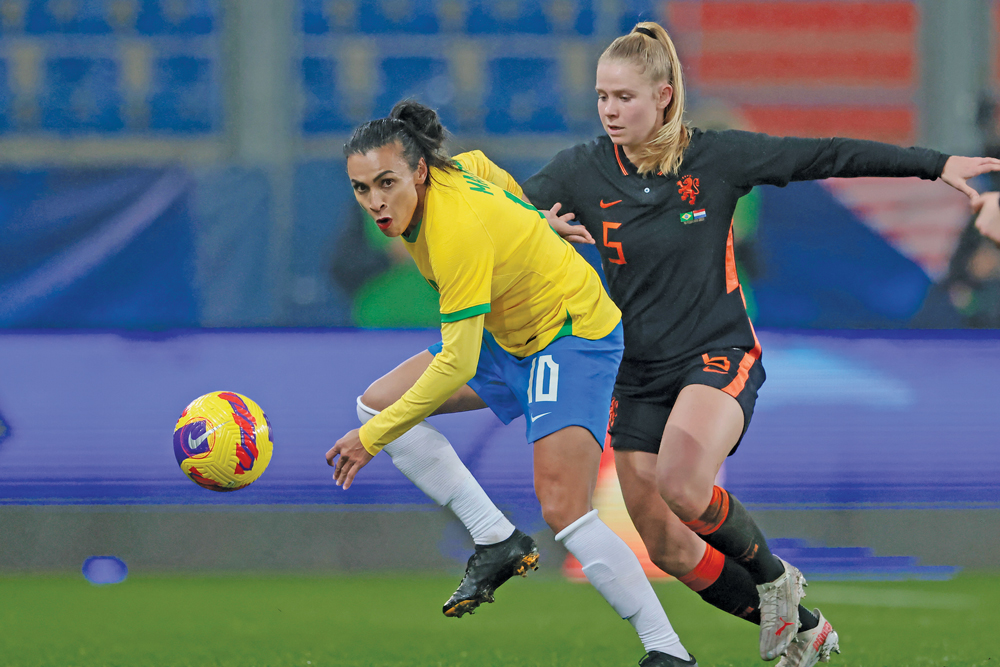For decades, women’s sports have lagged behind men’s sports in terms of media coverage, funding, and overall support. But guess what? Times are changing. The landscape is evolving, and women athletes are taking matters into their own hands. Women athletes are using social media to shift the narrative around women’s sports and increase visibility and support.
The Power of Social Media
In today’s interconnected world, more than 4.4 billion people actively use social media, making it an incredibly powerful tool for communication and influence. Platforms like Instagram, Twitter, and Facebook provide an avenue for athletes to connect directly with fans and share their stories.
Social media has been instrumental in bringing attention to women’s sports, from the meteoric rise of the US Women’s National Soccer Team to the increased recognition of women’s professional basketball. Athletes like Serena Williams and Simone Biles have millions of followers on social media, where they share their journeys, successes, and challenges.
Women athletes are using social media platforms to showcase their talents, foster a community, and build a supportive environment for other women in sports. By sharing their personal stories and achievements, they inspire the next generation of female athletes and challenge preconceived notions about women in sports.
Changing the Conversation
Historically, women’s sports coverage has been overshadowed by men’s sports, and female athletes have faced stereotypes that undermine their achievements. From be marred by numerous labels and doubts focusing on trivialising their athletic accomplishments women in sports have had to fight against these misconceptions.
Social media has provided a platform for women athletes to challenge stereotypes and promote a more accurate representation of their capabilities. For instance, athletes like Megan Rapinoe and Naomi Osaka have used social media to speak out against inequality, challenge gender norms, and advocate for mental health awareness. Furthermore, athletes Sue Bird, Alex Morgan, Simone Manuel, and Chloe Kim have started media companies like Togethxr to bring the stories behind female athletes to life. And, social media campaigns like #LikeAGirl, have helped challenge gender stereotypes and promote the power of women in sports.
By using social media, women athletes can directly address and correct misconceptions about their abilities and the importance of women’s sports. They have the power to control their own narrative and create a more accurate portrayal of their achievements, breaking down barriers and changing the conversation around women’s sports.
Drawbacks of Social Media
It is important to consider the ways stereotypes and abuse online still work against women’s freedom from the pervasive barriers they face. While many women have used social media to push back against harmful stereotypes and sexism, these problems are still very relevant.
Many female athletes experience abuse online. For example in a survey of the social media comments of the top 5 female tennis players at Wimbledon, they all faced heightened abuse during the heightened coverage of the tournament. Serena Williams faced the most severe abuse with aggressive comments and threats against her safety.
While athletes can easily reach fans, social media users can also easily reach athletes with hateful and abusive comments. As fans online, it is essential that we consider how our words can affect the person on the other side of the line. We know more about athletes personally than ever before but when a hateful comment is made we don’t see the effects of that negativity so we forget its harm.
From Online to In-Person
And hey, it’s not just about online engagement; we’re seeing some real-life impact too! More and more people are showing up to cheer on women athletes in person, filling up stadiums and arenas to witness these inspiring sporting events. The attendance numbers at women’s games are steadily climbing, and TV viewership is also on the rise. During the 2023 NCAA March Madness tournament a record number of fans tuned in to watch the women’s tournament with over 12 million viewers tuning into the women’s final.
It’s a thrilling time for women’s sports, as fans come together to support these incredible athletes, proving that their talent and dedication are worth watching and celebrating. So grab your foam fingers and face paint, because there’s never been a better time to be a fan of women’s sports!
Conclusion
Social media has played a pivotal role in transforming the landscape of women’s sports. Providing a platform for athletes to share their stories, challenge stereotypes, and connect with fans, has helped to increase visibility and support for women’s sports.
As social media continues to evolve and expand, its potential to drive positive change for women athletes and women’s sports remains immense. By embracing these platforms and using them to promote their achievements and address issues of inequality, women athletes can continue to shift the narrative around women’s sports and inspire future generations. So go support your favourite female athletes by buying tickets to their next event or following them and sending positive comments.
